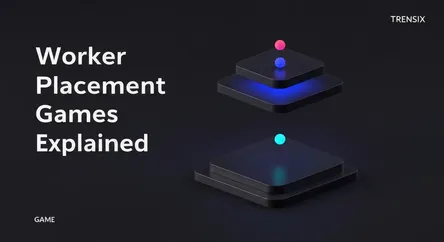Game
Worker Placement Games Explained

Discover the worker placement mechanic, a core concept in strategy board games where players place tokens to claim actions and outmaneuver opponents.
What is it?
Worker placement is a popular gameplay mechanic in modern board games where players draft actions from a shared pool. Each player has a set number of tokens, or "workers," which they take turns placing on specific action spaces on the game board. Once a worker is placed, that action is typically unavailable to other players for the rest of the round. These actions allow players to gain resources, construct buildings, or achieve other objectives. The central conflict arises from the scarcity of these action spaces, forcing players to prioritize their goals and anticipate their opponents' needs.
Why is it trending?
This mechanic is trending because it offers a perfect balance of simplicity and strategic depth. The core concept is easy to teach, but the decisions are often complex and meaningful. It promotes indirect player interaction, where competition is focused on claiming limited spots rather than direct conflict, which appeals to a wide range of players. This creates tension without feeling overly aggressive. Its versatility also allows designers to apply it to countless themes, from farming in Agricola to fantasy quests in Lords of Waterdeep, ensuring a constant stream of fresh and engaging titles.
How does it affect people?
Worker placement games challenge players' strategic planning and adaptability. The gameplay forces individuals to constantly evaluate opportunity costs: Should you take a valuable resource now, or block an opponent from a powerful move? This creates a highly engaging mental puzzle where every placement matters. It fosters skills in prioritization, resource management, and anticipating future turns. The satisfaction comes from executing a clever plan or successfully adapting when an opponent takes a desired spot, making for a rewarding and thought-provoking experience that keeps players coming back for more.